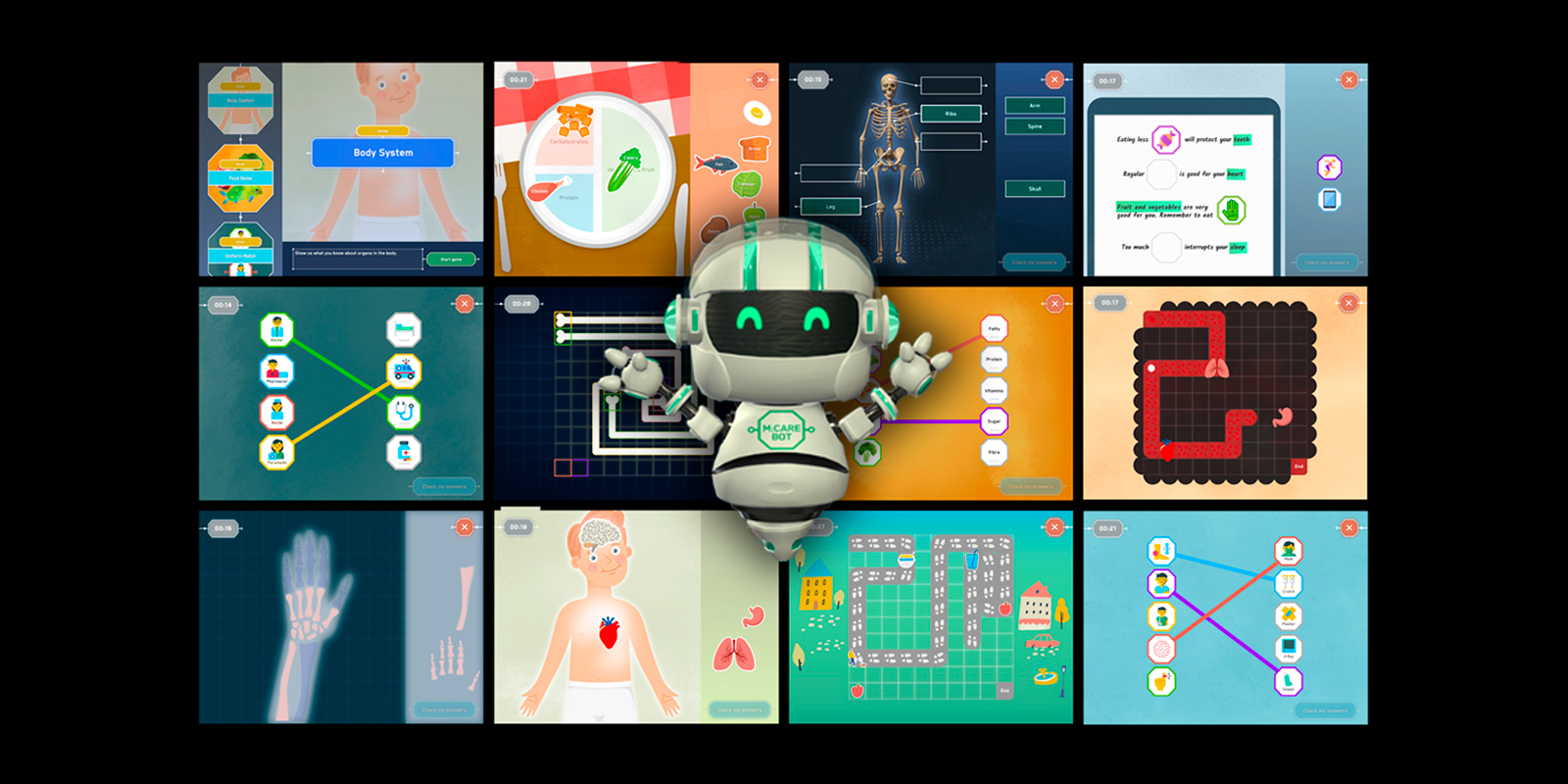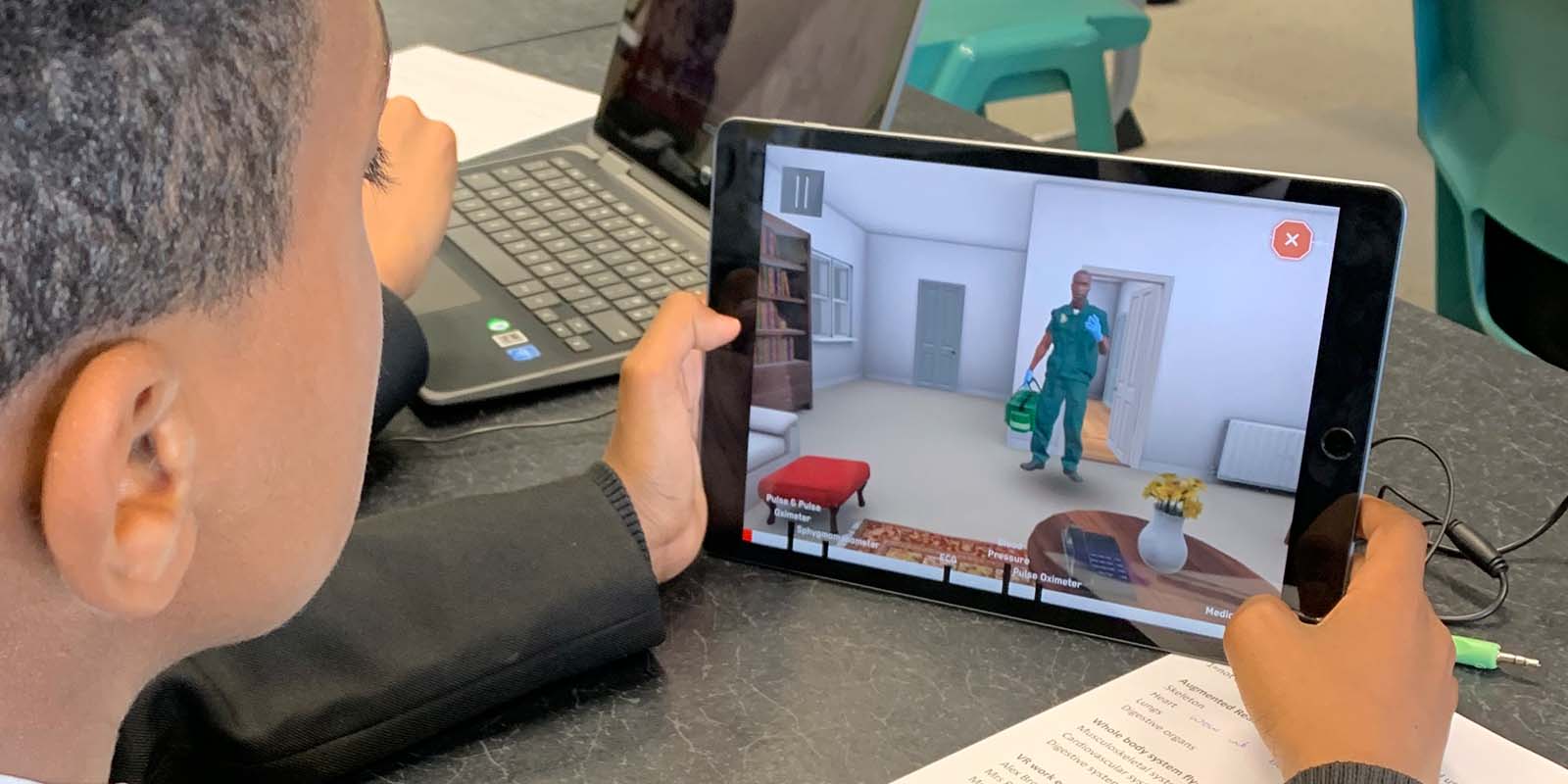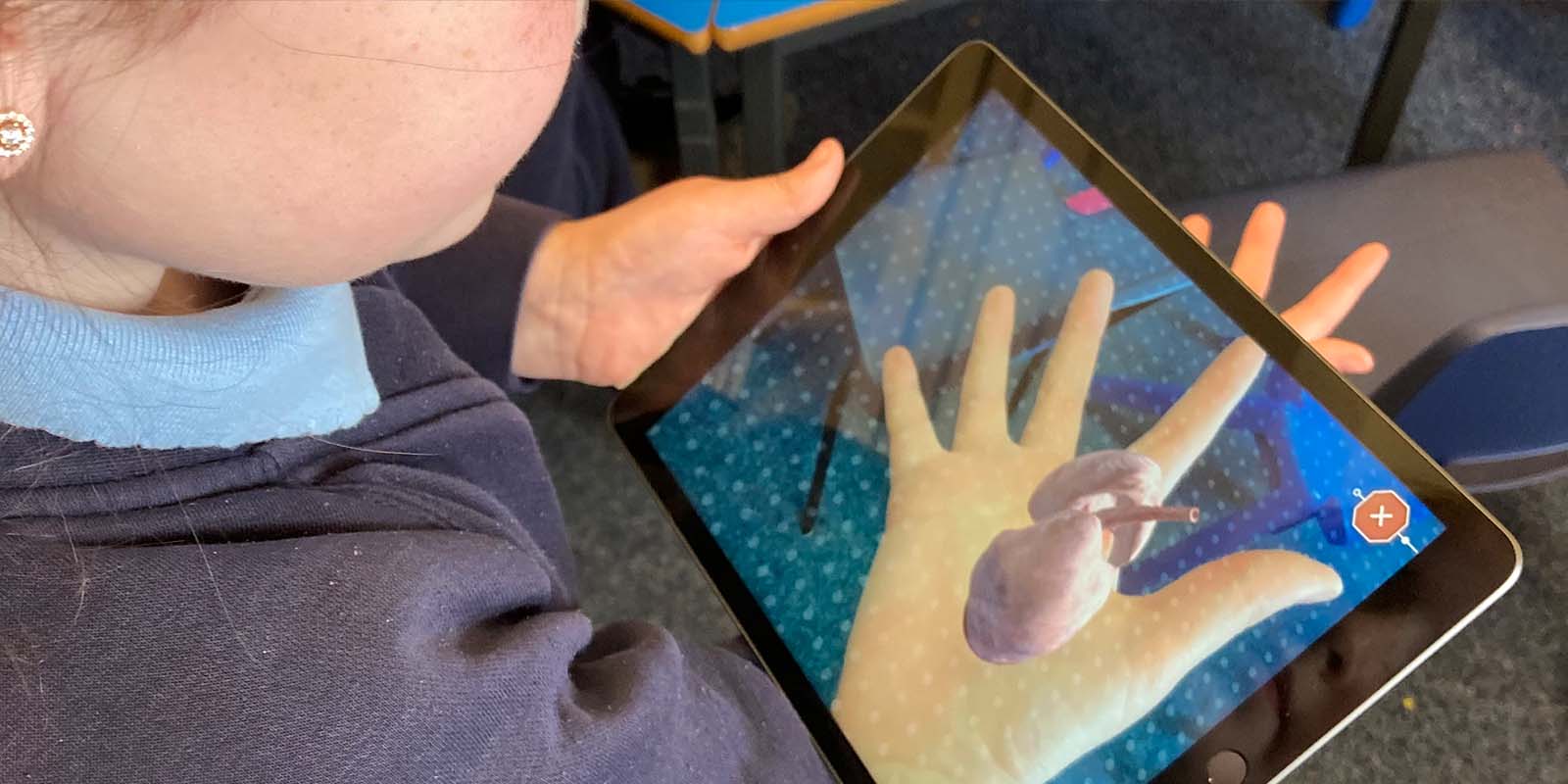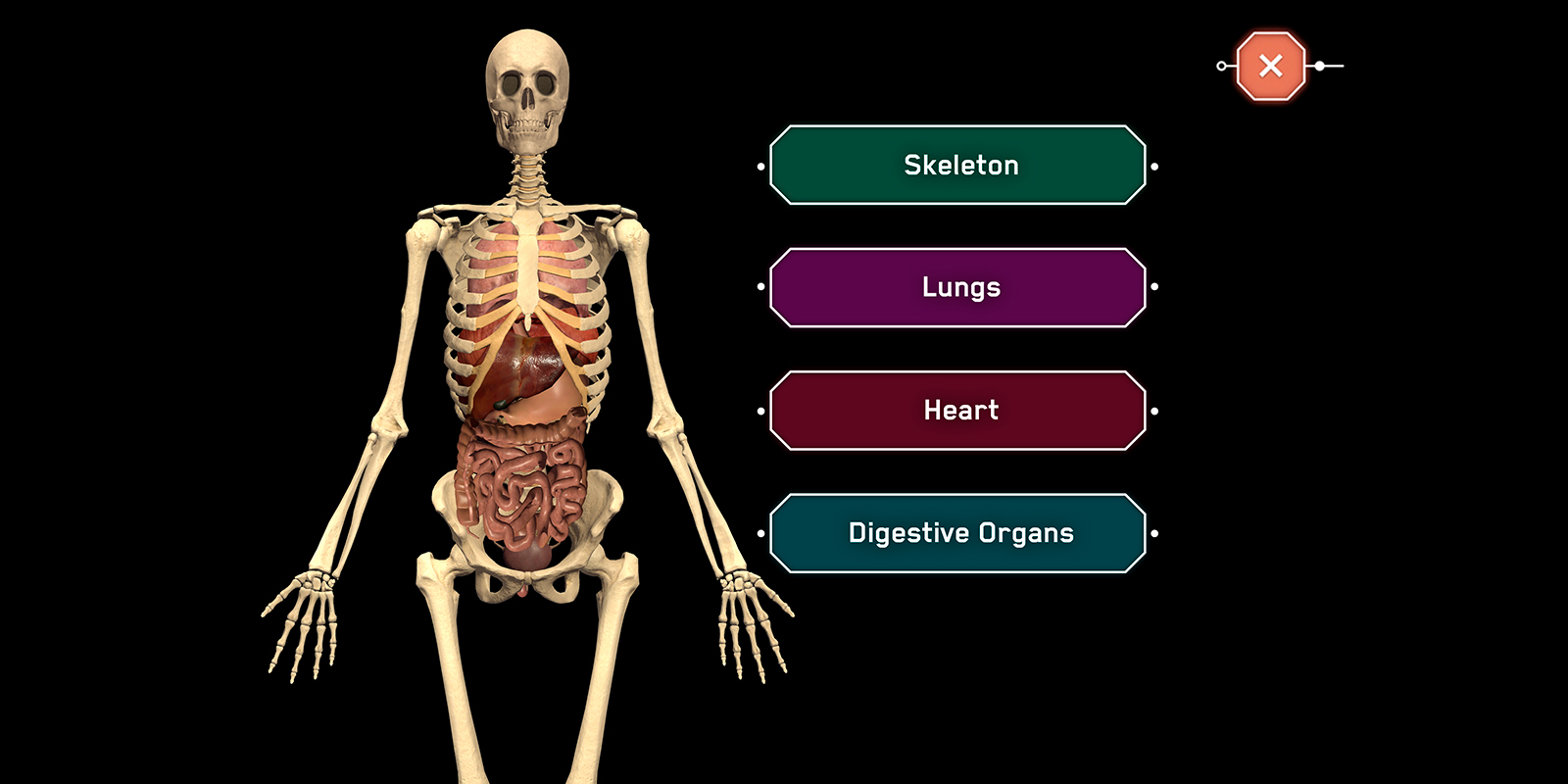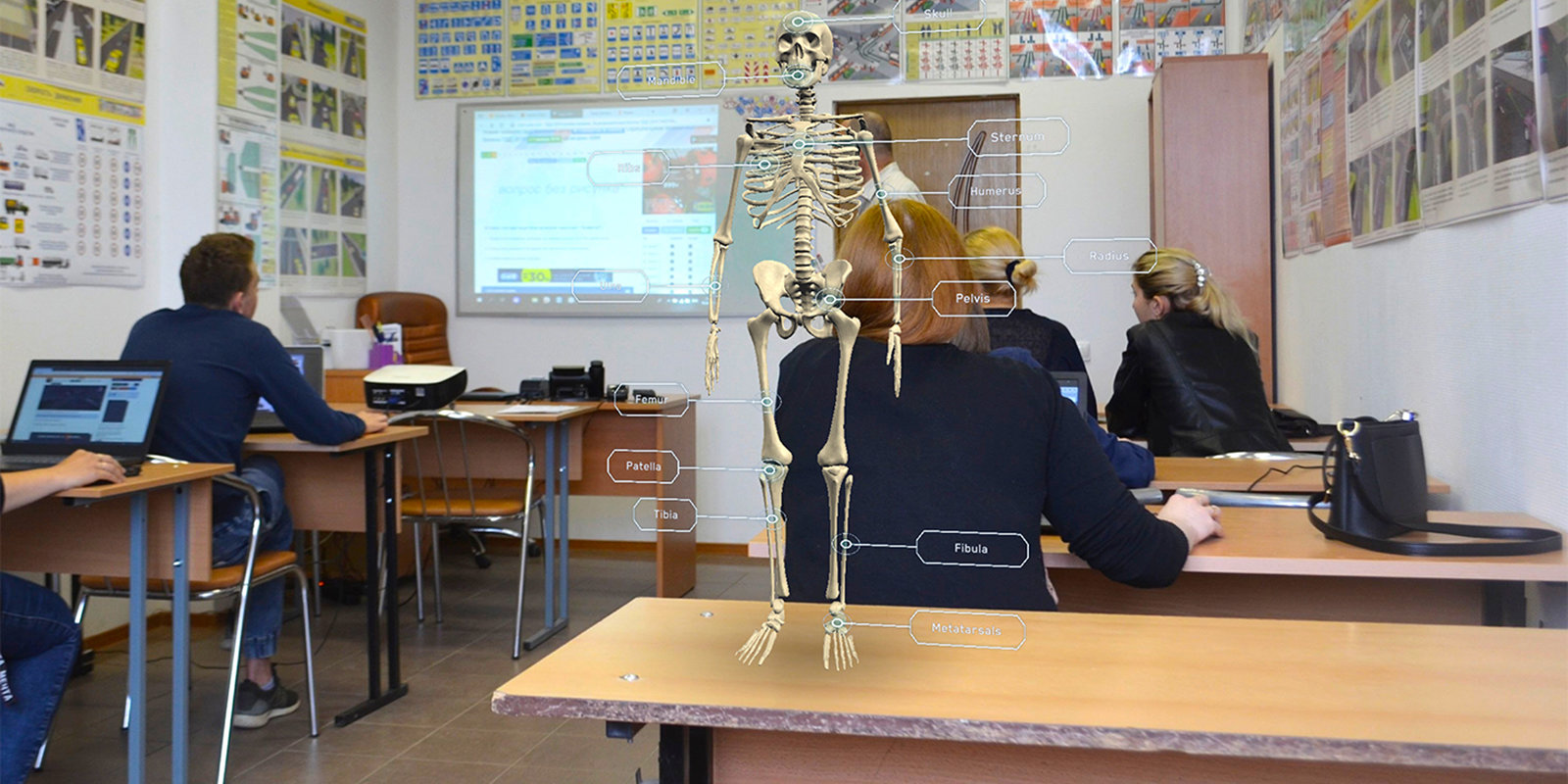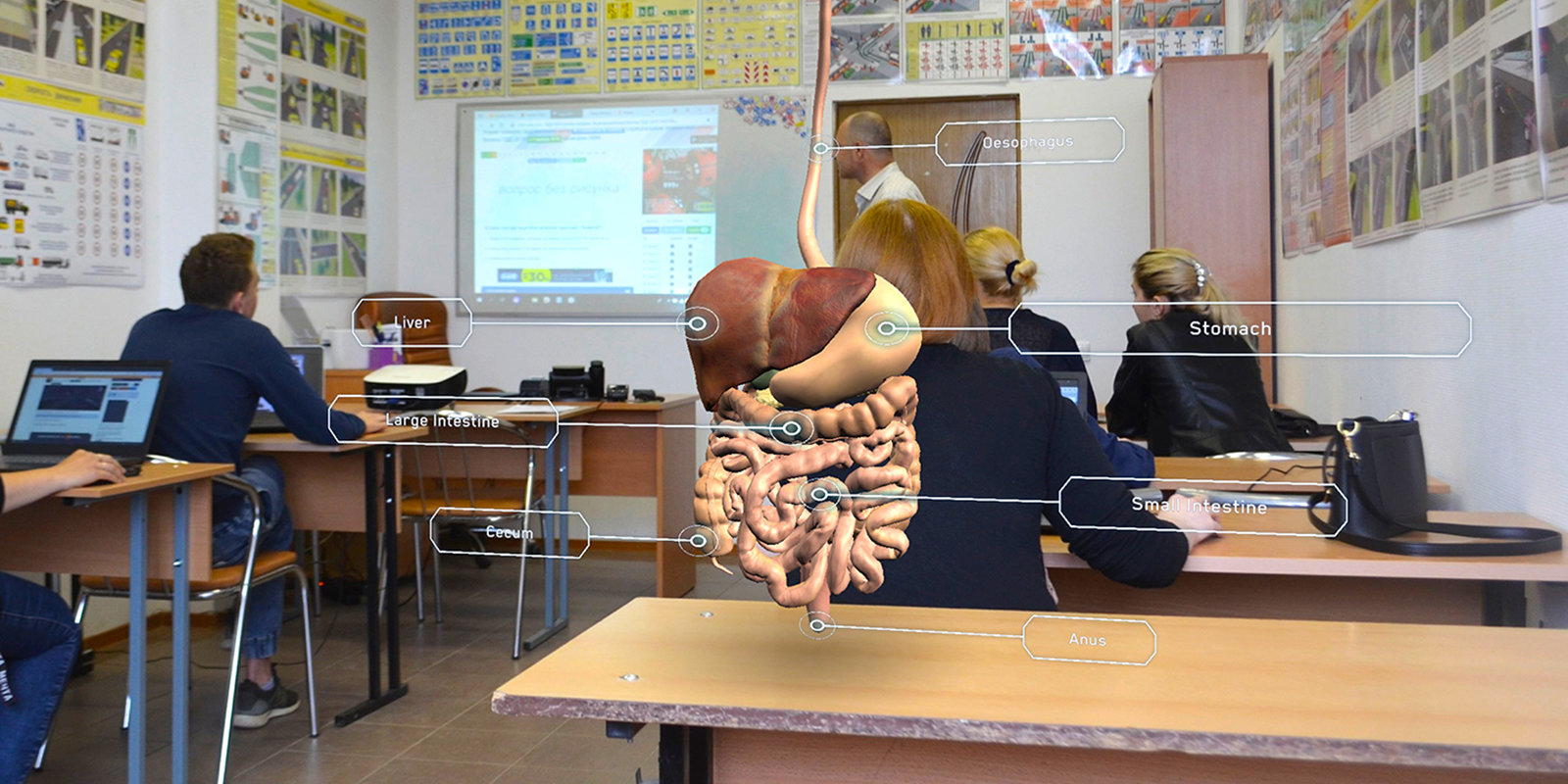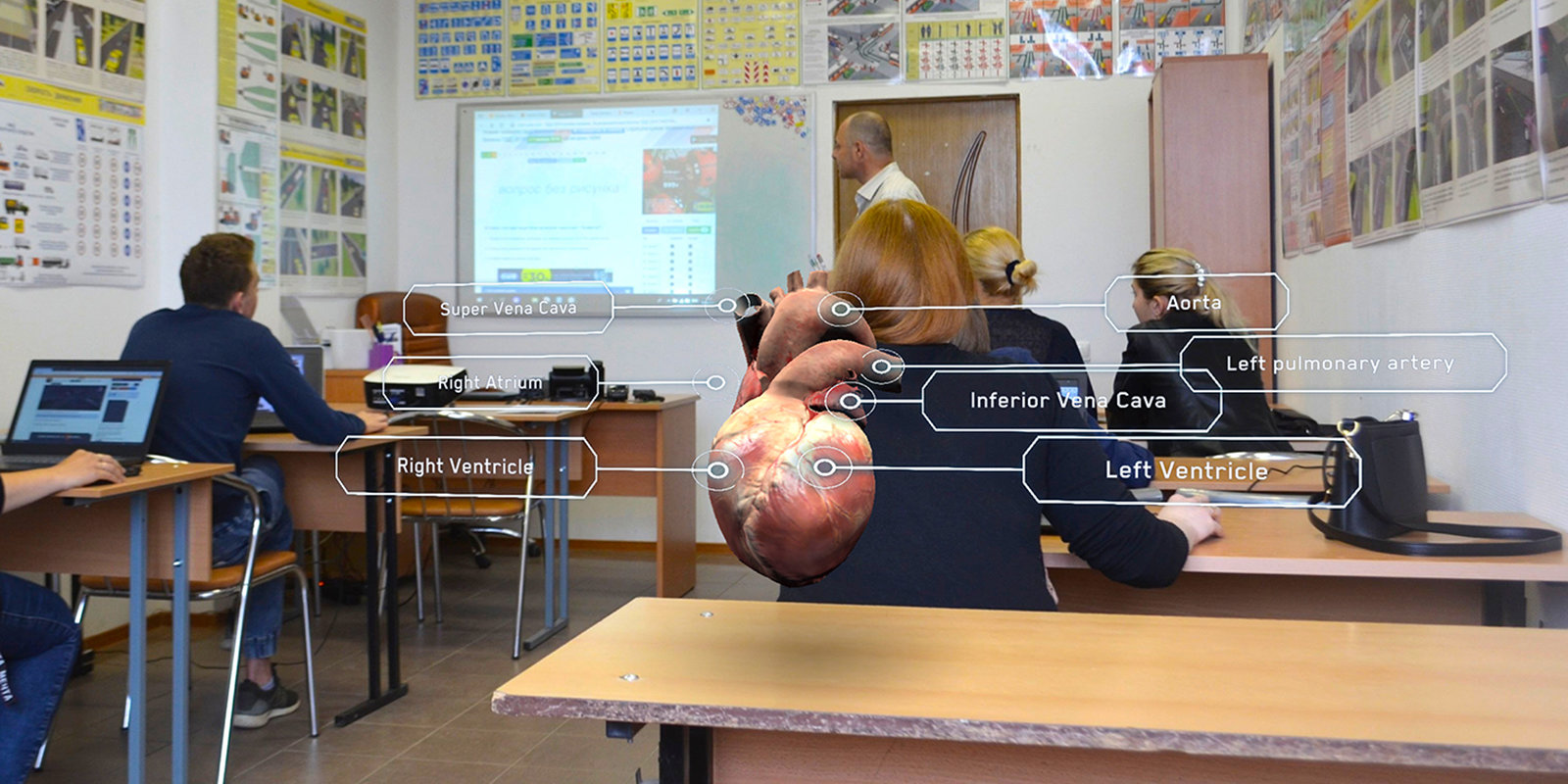How do you make learning interesting, accessible, and engaging? You introduce positive disruption to the classroom, that’s how.
Health Education England (HEE) with Greater Manchester Combined Authority (GMCA) and Manchester Metropolitan University (MMU) commissioned Corporation Pop to build a suite of resources for school children at Key Stages 1-4 (ages: 4-16). They included VR, AR, educational games and 3D body system fly-through videos.
The goal was to teach them vital information included in the national curriculum. Additionally, they wanted to encourage children to appreciate and consider a future career in the health and care sector.
From the outset, the product was to be co-designed with users, so testing and feedback were an incredibly important aspect of the project. An incredibly important aspect made much trickier by restrictions imposed because of a pandemic.
Projects with such broad scope are naturally fraught with challenges. But education is an area we have experience in, and this wasn’t our first rodeo.
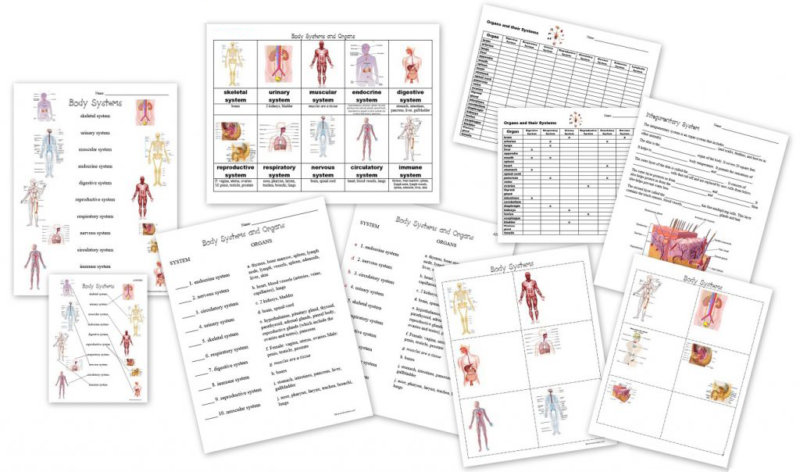
Example of existing classroom resources
Challenge: classroom learning by stealth
Take traditional, paper-based assets and create engaging digital experiences which deliver learning by stealth.
Our team faced the challenge teachers have been addressing for years — how to make education and learning interesting. Just how do you increase young people’s knowledge without them realising they’re learning? We wanted to encourage a ‘lean forward’ mentality where users actively wanted to be involved in the learning process. The solution came in two guises.

Target user(s) testing workshop
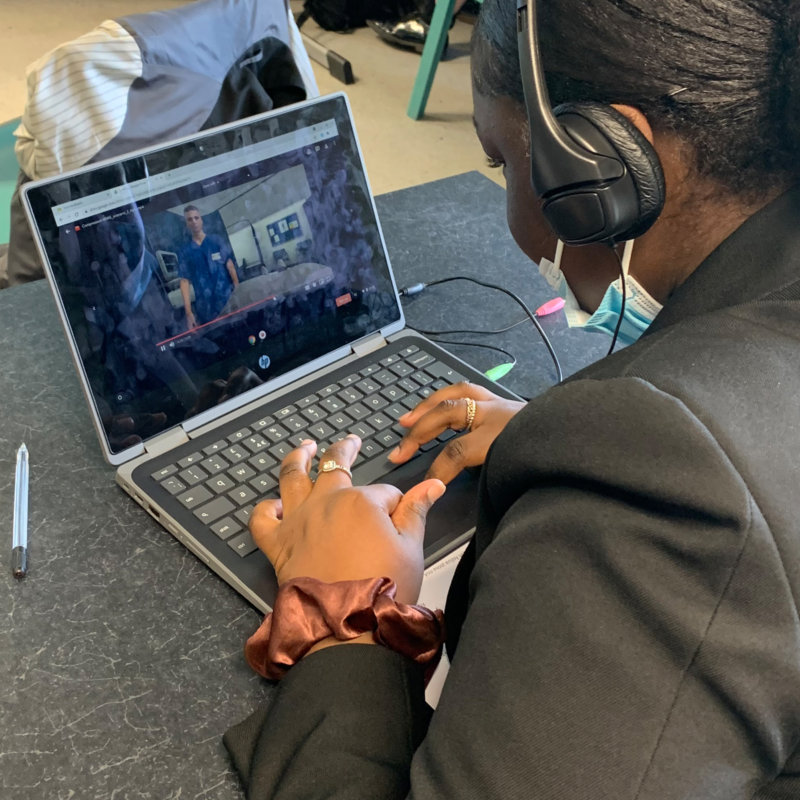
Target user testing workshop
Response 1: advanced tech — VR
Kids love new stuff, especially tech, so choosing the most advanced virtual reality system available was a given. We researched VR systems designed specifically for schools and found what was available on the market to be dated. They couldn’t handle our content and we needed something that wouldn’t crash at every given opportunity. And so, the Oculus (now Meta) Quest 2 was our weapon of choice.
Response 2: the power of storytelling
In any group of students, you’ll find some who learn visually, some by listening and others by experiencing. Storytelling therefore has something for everyone and is by nature more engaging than simple facts and statistics. Stories stick.
We began by taking content about major body systems — Musculoskeletal, Digestive and Cardiovascular — from the national curriculum syllabus. Then we placed it side by side with a range of health and care careers, and came up with three VR work experience stories.
Healthcare avatars that feature throughout the VRWE scenarios
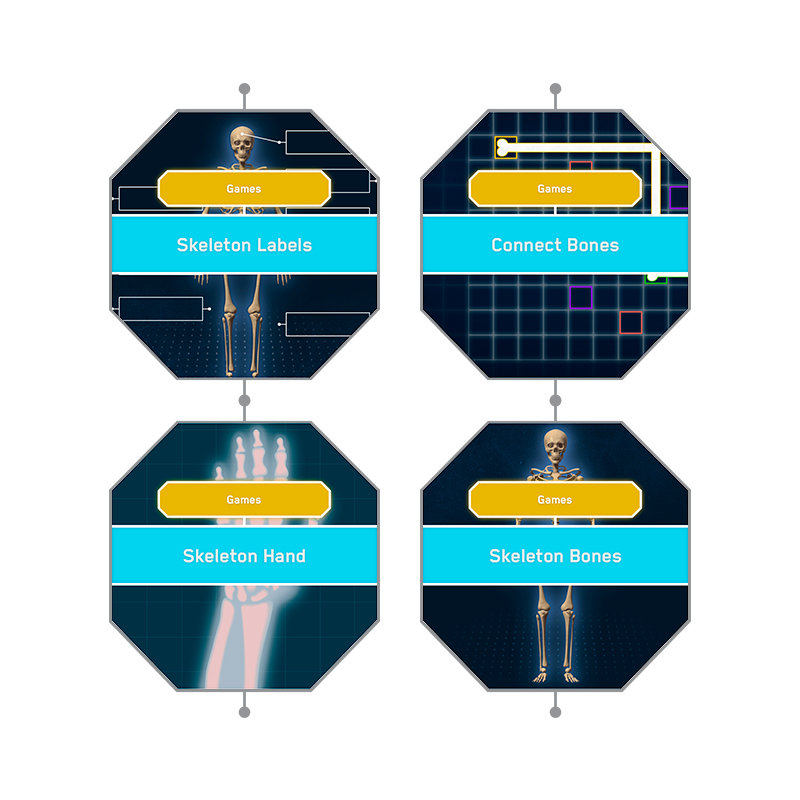
4x interactive games as part of the 'VRWE1' scenario
Virtual Reality Work Experience 1 (VRWE1)
In one, Alex, a child with a wrist injury, follows a diagnosis and treatment pathway related to the musculoskeletal system. Alex meets a Doctor, a Radiologist and a Nurse and the user experiences what those roles sometimes involve. Then, an animated and narrated 3D fly-through video of the Musculoskeletal system accompanies the VR experience. A set of related games support these as do a labelled augmented reality experience allowing users to zoom and rotate a skeleton on their desk.
VRWE1 edited video sample
Musculoskeletal system 3D fly-through edited video sample
Virtual Reality Work Experience 2 (VRWE2)
The second VR work experience involves Mrs Brown, Alex’s elderly grandmother. She has called the emergency services after experiencing palpitations and shortness of breath. A Paramedic attends her at home, then she travels in an ambulance to hospital. Next, Mrs Brown meets a nurse who performs an ECG and a range of standard tests on her. Users see her at home with a Carer where they get an insight into at-home personal care. And finally, she visits the Pharmacy, where a pharmacist dispenses medication for her condition. This experience, which is about the cardiovascular system, is accompanied by a second 3D fly-through video. This resource follows the journey of oxygen from the air, through the lungs, into the bloodstream and to the heart. We also delivered another collection of supporting games about the cardiovascular system and an augmented reality heart.
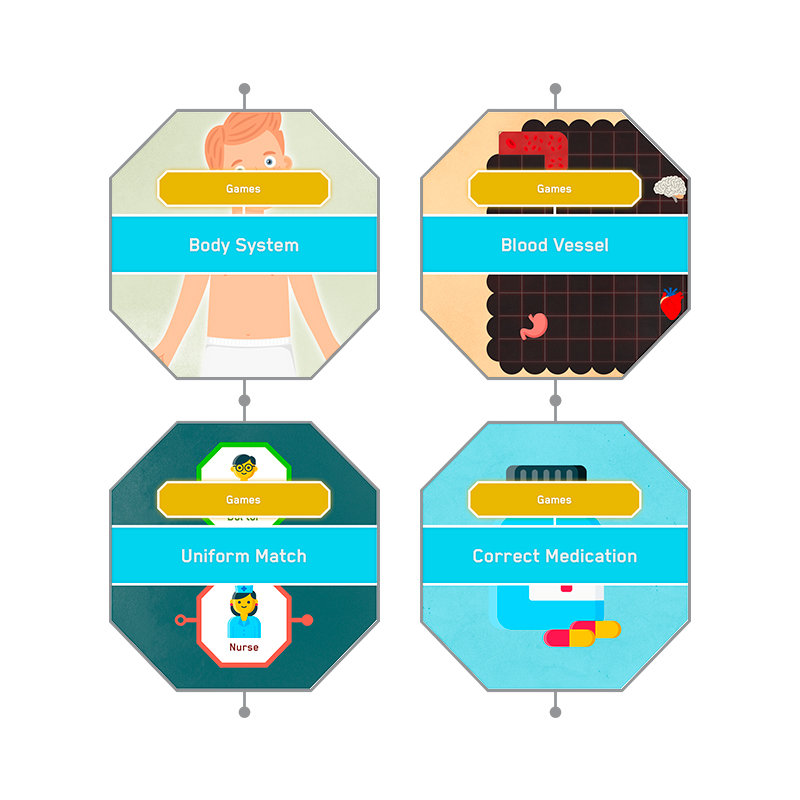
4x interactive games as part of the 'VRWE2' scenario
VRWE2 edited video sample
Cardiovascular system 3D fly-through edited video sample
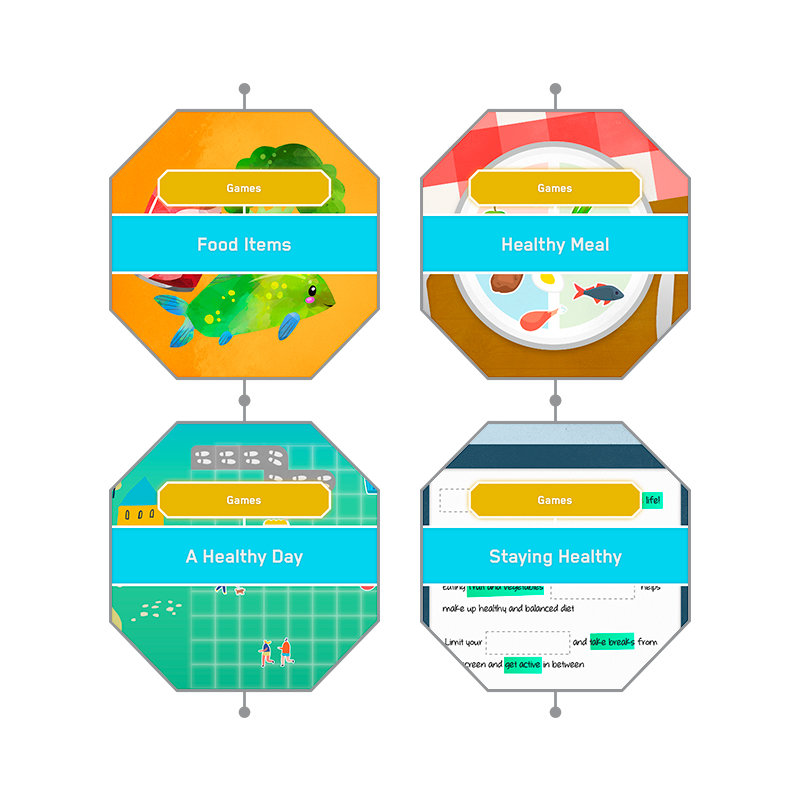
4x interactive games as part of the 'VRWE3' scenario
Virtual Reality Work Experience 3 (VRWE3)
The final VR work experience focuses on diet. It is from the point of view of Mr Brown, Alex’s dad. He has recently been diagnosed with type 2 diabetes and is meeting a Dietitian. The digestive system fly-through follows the path of food from the point of being eaten to its final conclusion. And we even gave it a splash and a flush for added authenticity — which, naturally, the users loved. Supporting games are about the content of food and healthy lifestyles, and of course, we created an AR digestive system.
VRWE3 edited video sample
Digestive system 3D fly-through edited video sample
Challenge: motion sickness from VR
When your head goes in one direction but what you’re looking at goes in another, there is a tendency to feel queasy. Whilst nobody actually vomited during development and testing, it was something we knew we’d have to overcome.
Response: user testing and knowing your tech
When designing virtual reality there are fairly straightforward things you can do to minimise the need for a sick bag. They include making sure the frame rate isn’t too high and keeping movement within certain parameters of speed and frequency.
Beyond that, you must rely on testing, so that’s what we did. We took our kit into schools and had the end users — school children — experiencing the VR at regular intervals. Kids being kids, they weren’t interested in filling out feedback forms, but we didn’t need that. Seeing their reactions and hearing what they said told us everything we needed to know.

Target user(s) testing workshop
Challenge: delivering a project remotely
Delivering a complete project across different platforms and technologies, co-designed with users, almost entirely remotely was tricky. There’s nothing quite like face-to-face contact with clients, users and colleagues. But when COVID-19 hit, that went out of the window and our well practised methods had to be adapted, quickly.
Response: everything online
Well, we say everything… Practically everything went online. Client meetings and updates, internal meetings, even some of the feedback from the school kids did. But in a world of social distancing things quickly found their way onto Zoom and Miro and Basecamp and Slack.
However, when the stars aligned, and nobody was isolating, we squeezed in some all important in-person time. That meant meeting our clients on the roof terrace at work and the team gathering when the government lifted restrictions. Amazingly, we even managed to get into a school to work with our users.
Working remotely throughout this project was incredibly challenging but we pulled up our pants and stepped up. Much like the rest of the world.
Edited sample of games (3 of the 12) created
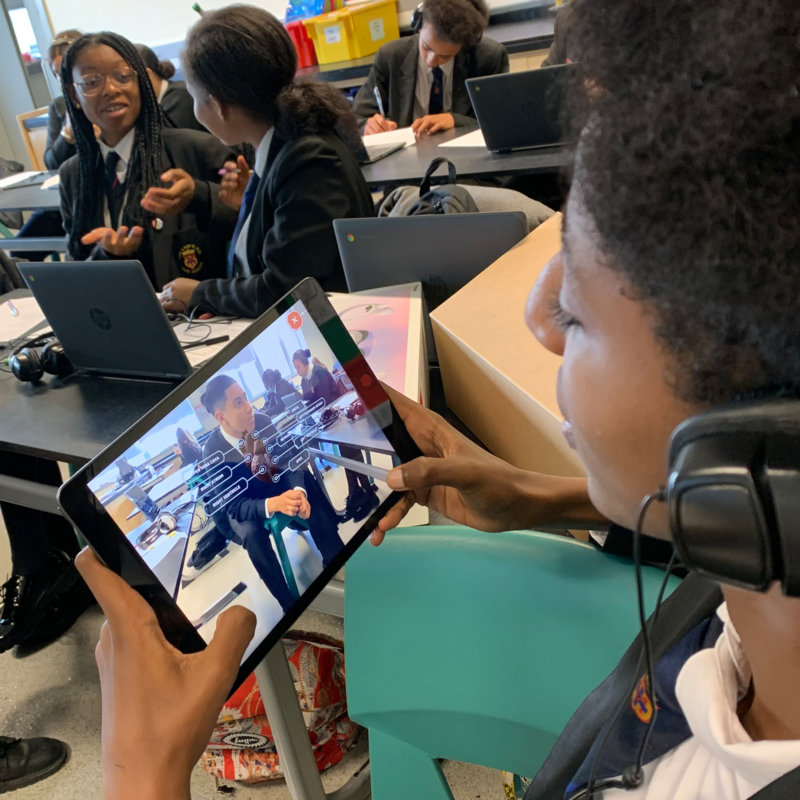
Target user testing workshop
Outcome:
We delivered a collection of experiences which cover national curriculum topics from key stages 1-4 and which kids actually love.
During a testing session we heard one of the children say, ‘Was that science? It felt more like a school trip than a lesson!’ What more can you ask for?
We are as thrilled with the end product as our clients are. By using a combination of outstanding UX research, game devising, 3D artistry, scriptwriting, design, VR building and Agile project management, we really pulled it out of the bag. This was exemplary teamwork in action, if we say so ourselves. We’ve created state-of-the-art tools for use in an educational setting, that meets the demands of the national curriculum and the children that use it.
Key Outcomes:
- Storytelling as a powerful engagement tool
- Advanced technology and gamification used as viable classroom tools.
- Successful delivery of a project almost entirely remotely
“I just want to say how delighted I am to be supporting the M-Care Virtual Reality education programme. Virtual and augmented reality experiences offer so much potential for bringing the school curriculum to life, as well as making the classroom fun, and offering students new and innovative ways of learning.”
Andy Burnham
Mayor, Greater Manchester

